This week’s featured plant is my favorite summer woodland wildflower. American bellflower (Campanulastrum americanum or sometimes Campanula americanum) is native to much of North America east of the Rocky Mountains. You can find its bluish-purple star-shaped flowers all over central Iowa now, especially along bike trails. If you take a closer look, watch where you step, because poison ivy thrives in similar habitats and soil conditions.
The American bellflowers pictured below are all blooming near woodland edges in Windsor Heights and Urbandale.
This post is also a mid-week open thread: all topics welcome.
According to Wildflowers of Iowa Woodlands by Sylvan Runkel and Alvin Bull, American bellflower is also known as tall bellflower or bluebell. It looks nothing like the Virginia bluebells that bloom during the spring. Runkel and Bull write,
The unusual flowers are not truly bell shaped. Five deeply-cut lobes join at the base. The resulting appearance is more as a five-pointed star measuring perhaps an inch across. The delicate blue of the flower shades abruptly to a pale ring at the throat from which emerges a long style (slender tube extending from the ovary). This style curves gently downward with a pronounced up-turn at the tip. Flower buds may bloom at random along the spike-like flower stem.
For a more detailed botanical description of American bellflower foliage and blossoms, check out the Illinois Wildflowers or Minnesota Wildflowers websites. The flowers I see tend to be more purple (as pictured on the Minnesota site), rather than the bright blue the Illinois site displays.
Flowers start blooming closer to the bottom of the stem; the buds at the top are the last to open.
American bellflowers often grow in small colonies.
Here a bellflower plant is blooming next to a large stand of yellow or pale jewelweed along the Urbandale bike trail leading to Walker Johnston Park.
American bellflower plants are usually between two feet and six feet tall, but here a very short plant is growing out from under the jewelweed. Toward the left, some undetermined kind of white aster is flowering.
American bellflower likes light shade, often found at woodland edges. Here some bellflowers are growing inside a colony of pale jewelweed.
White snakeroot is another common wildflower in Iowa wooded areas. Although the individual flowerheads are hard to make out, you can see white snakeroot blooming to the right of the American bellflower here. Toward the lower left, some white snakeroot plants have not started flowering yet. (This post contains close-up views of white snakeroot leaves and flowers.)
Although they are hard to see, a bunch of white avens are growing in front of these American bellflowers. Most of the white avens flowers have already gone to seed and are well on the way to becoming annoying burs that stick to your clothing.

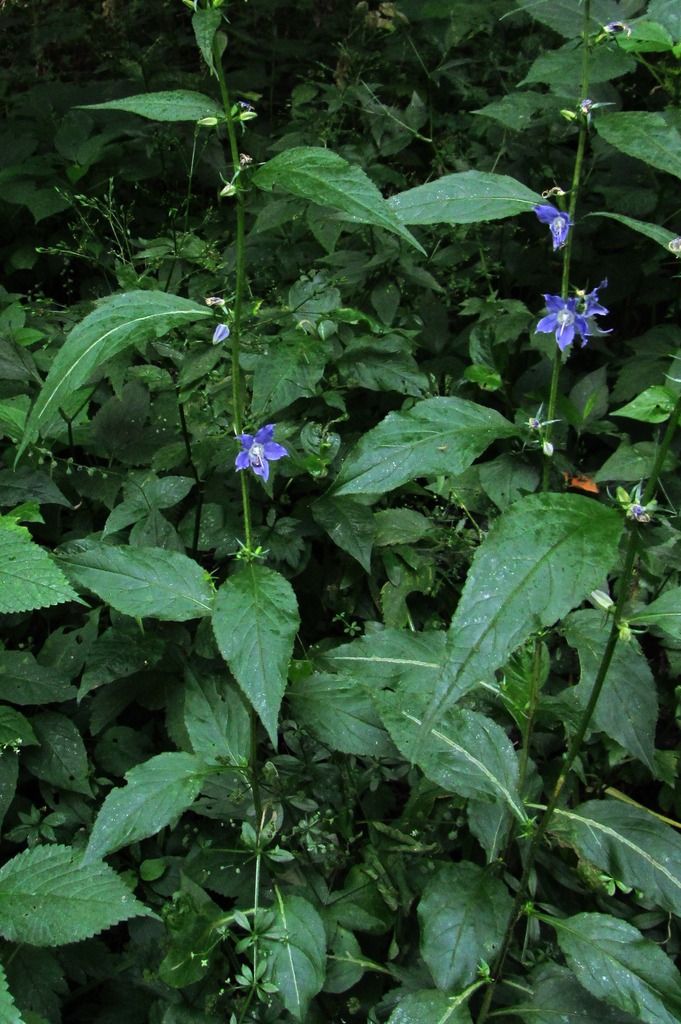
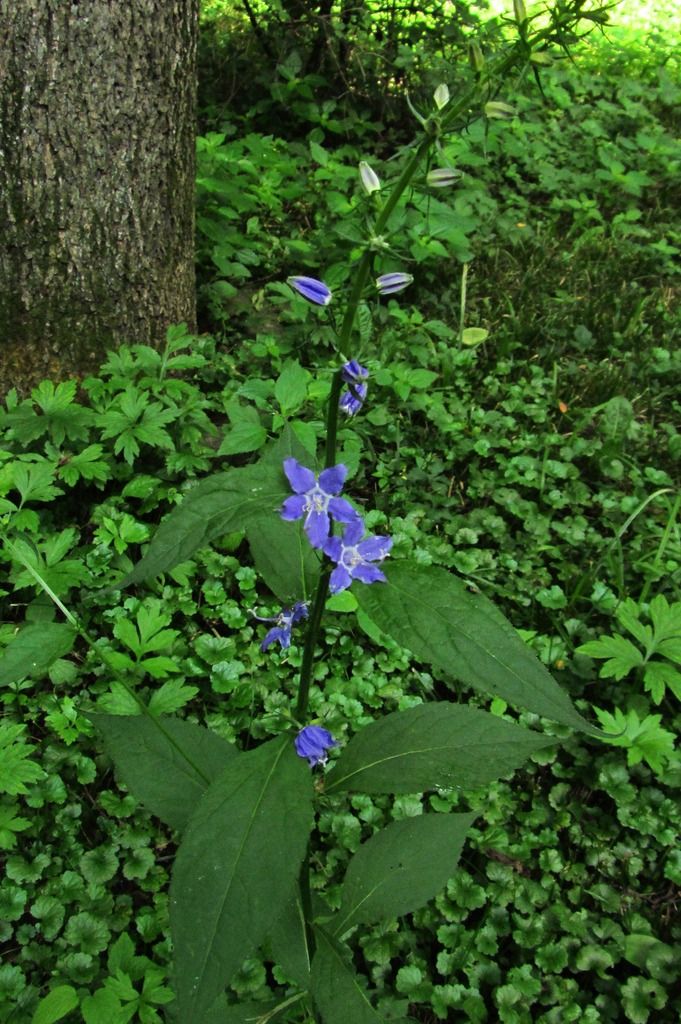
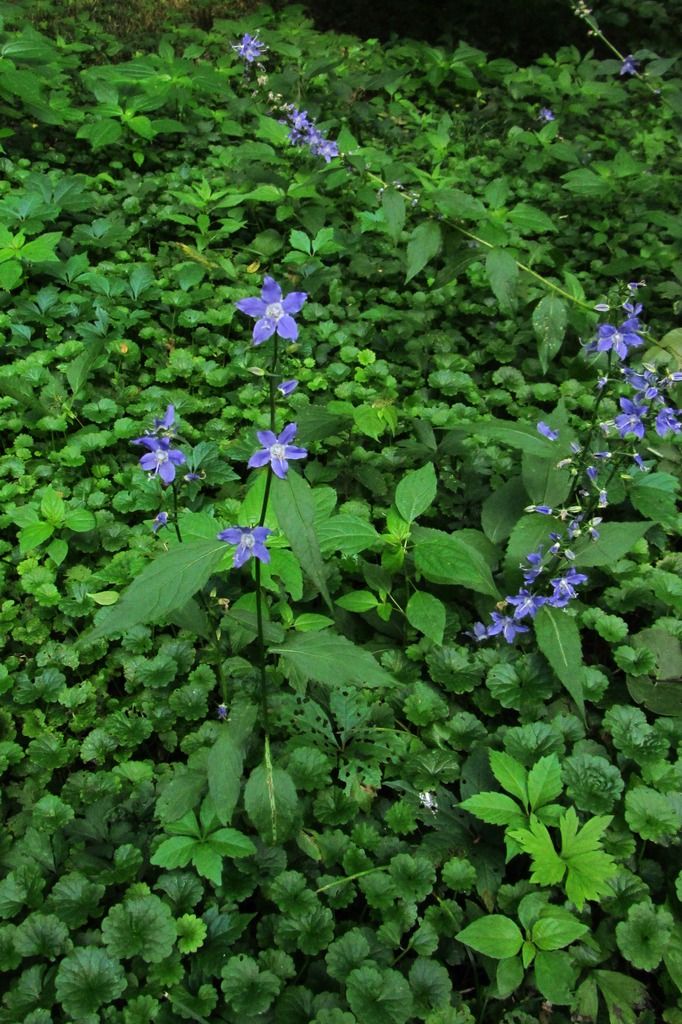


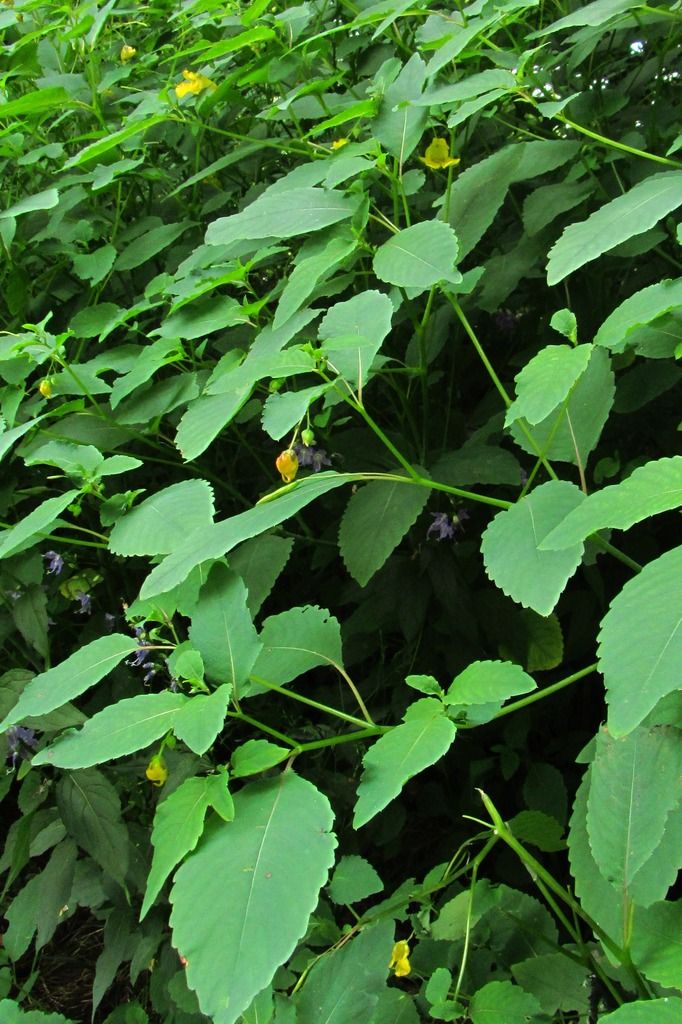
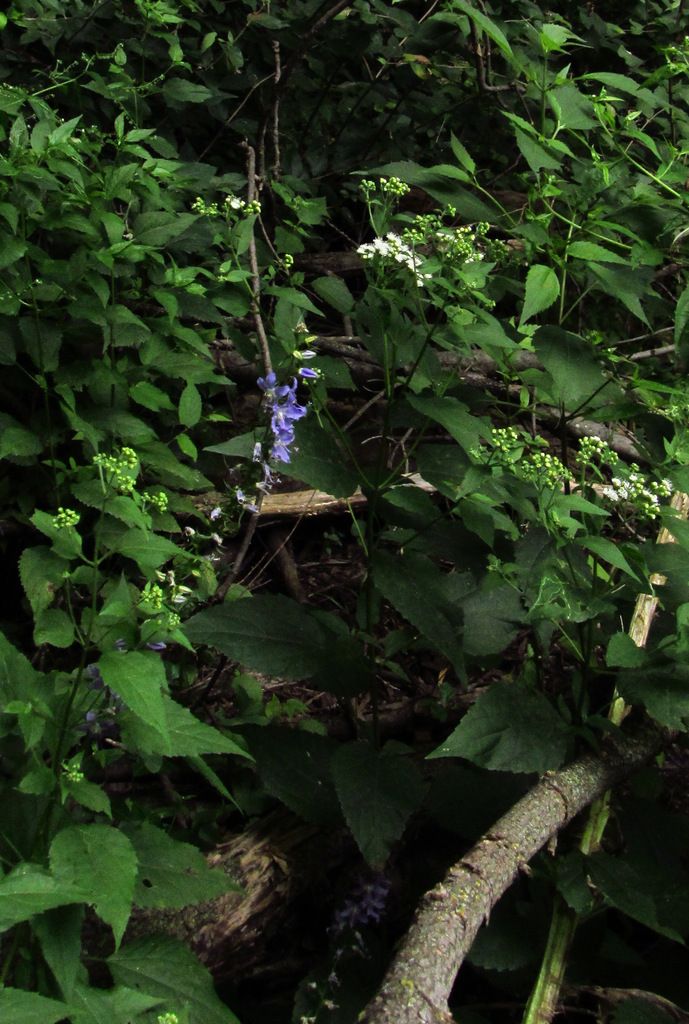

1 Comment
White aster
Nice photos!! I think the “white aster” in one photo may be daisy fleabane. It blooms much earlier in the season than fall asters. But I could be wrong — SKOC (Some Kind Of Composite) is a phrase I’ve heard on botany walks.
PrairieFan Fri 21 Apr 9:03 PM